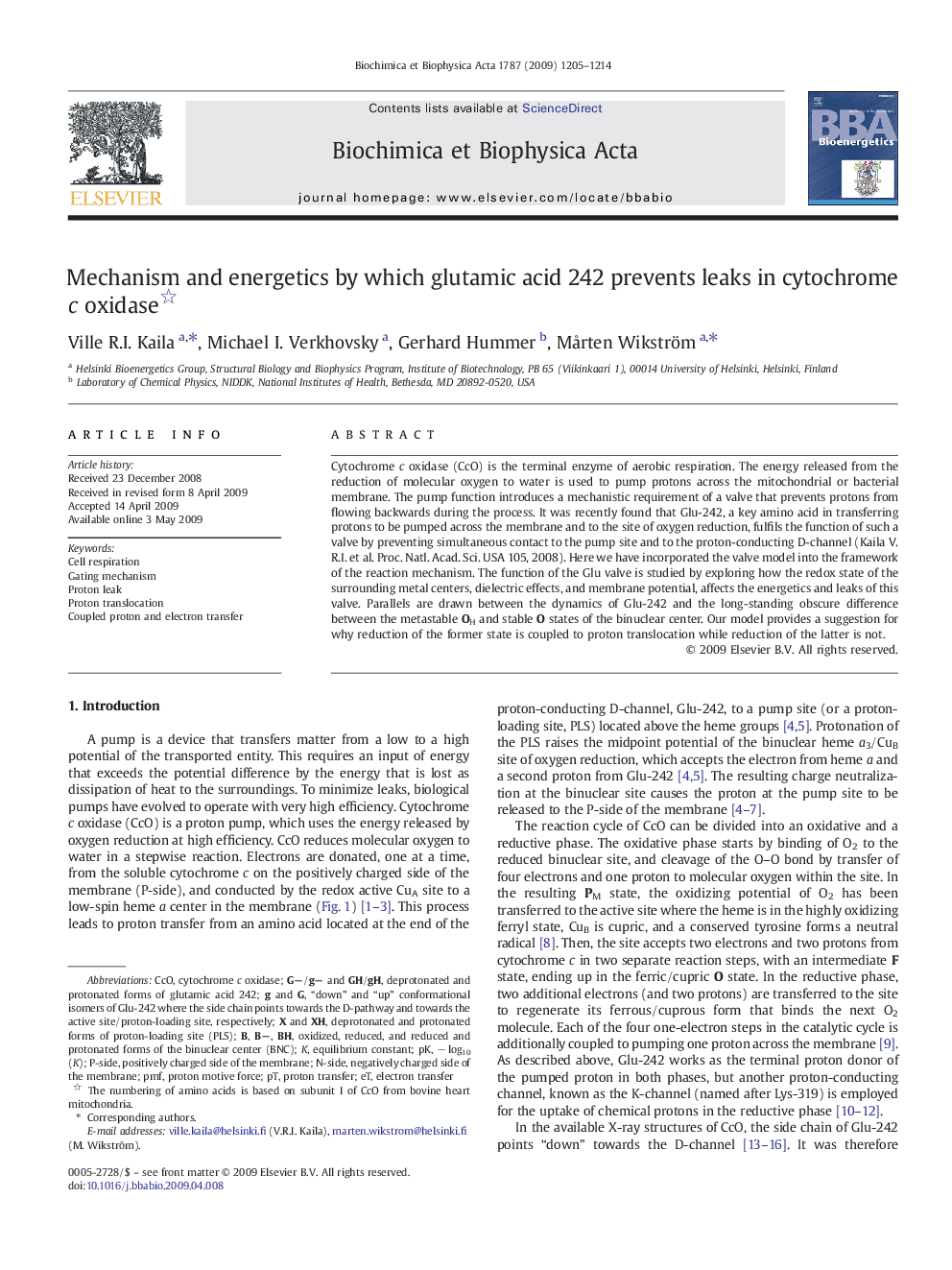| Article ID | Journal | Published Year | Pages | File Type |
|---|---|---|---|---|
| 1943064 | Biochimica et Biophysica Acta (BBA) - Bioenergetics | 2009 | 10 Pages |
Cytochrome c oxidase (CcO) is the terminal enzyme of aerobic respiration. The energy released from the reduction of molecular oxygen to water is used to pump protons across the mitochondrial or bacterial membrane. The pump function introduces a mechanistic requirement of a valve that prevents protons from flowing backwards during the process. It was recently found that Glu-242, a key amino acid in transferring protons to be pumped across the membrane and to the site of oxygen reduction, fulfils the function of such a valve by preventing simultaneous contact to the pump site and to the proton-conducting D-channel (Kaila V.R.I. et al. Proc. Natl. Acad. Sci. USA 105, 2008). Here we have incorporated the valve model into the framework of the reaction mechanism. The function of the Glu valve is studied by exploring how the redox state of the surrounding metal centers, dielectric effects, and membrane potential, affects the energetics and leaks of this valve. Parallels are drawn between the dynamics of Glu-242 and the long-standing obscure difference between the metastable OH and stable O states of the binuclear center. Our model provides a suggestion for why reduction of the former state is coupled to proton translocation while reduction of the latter is not.
